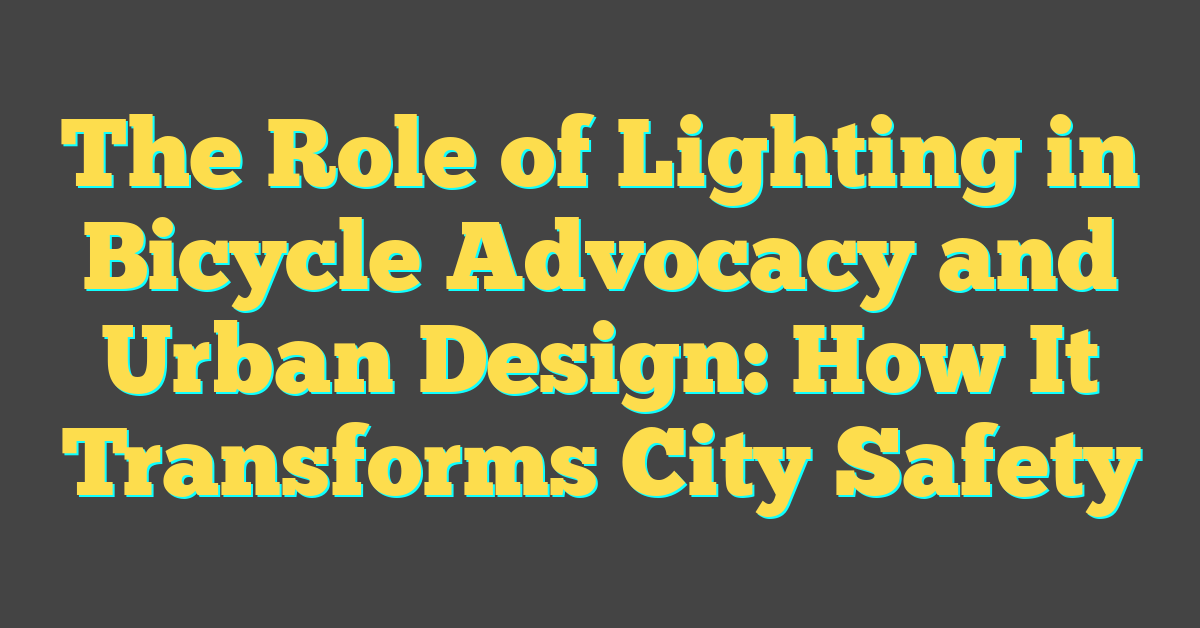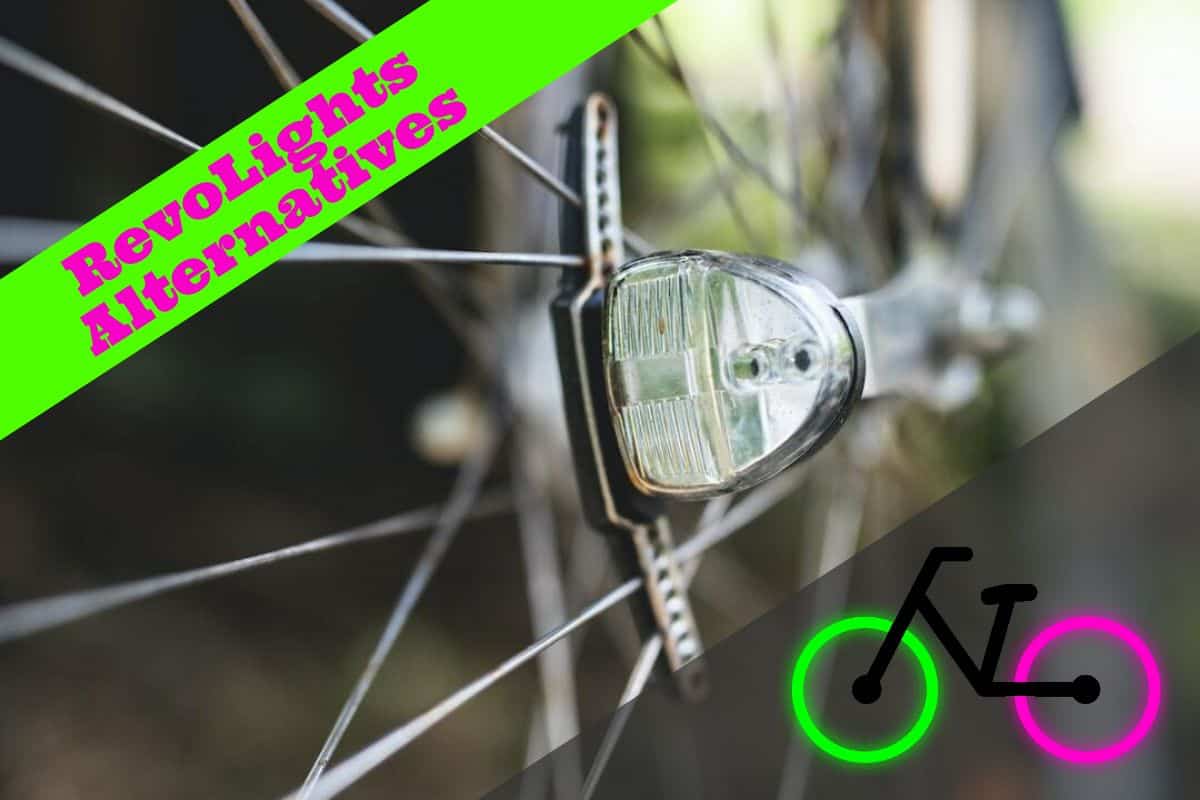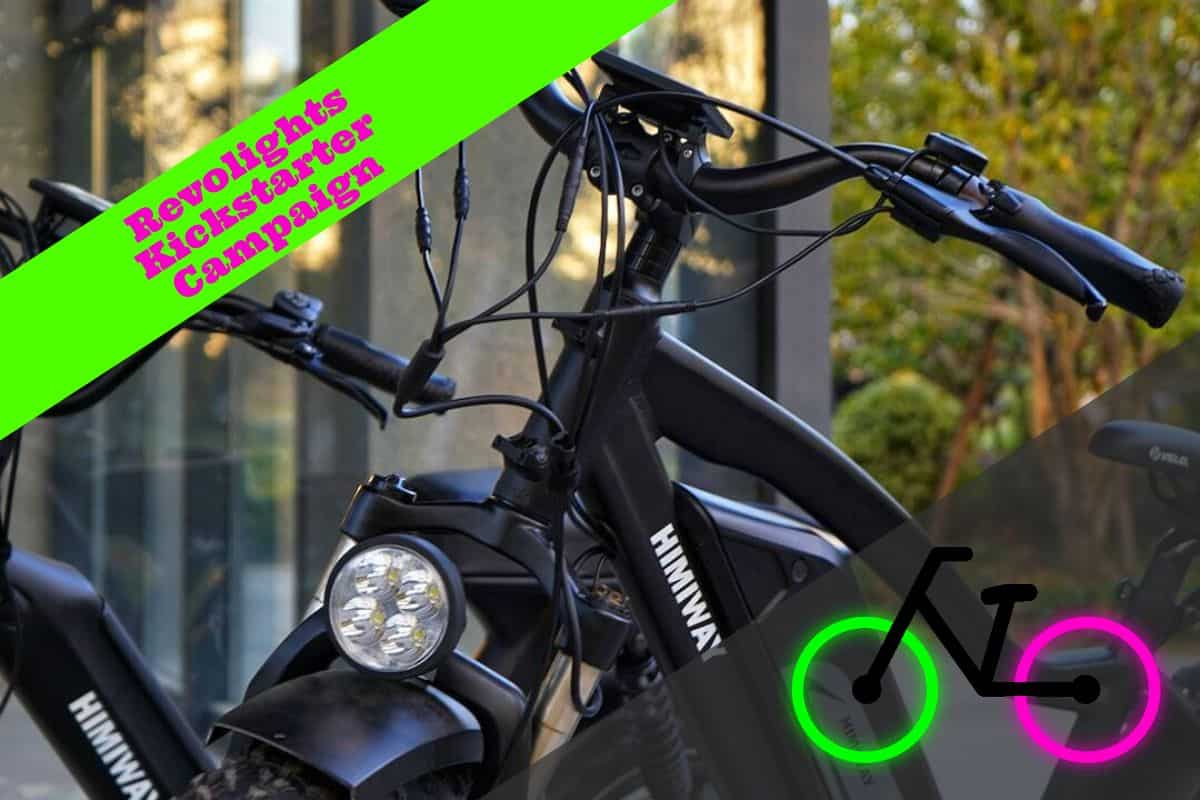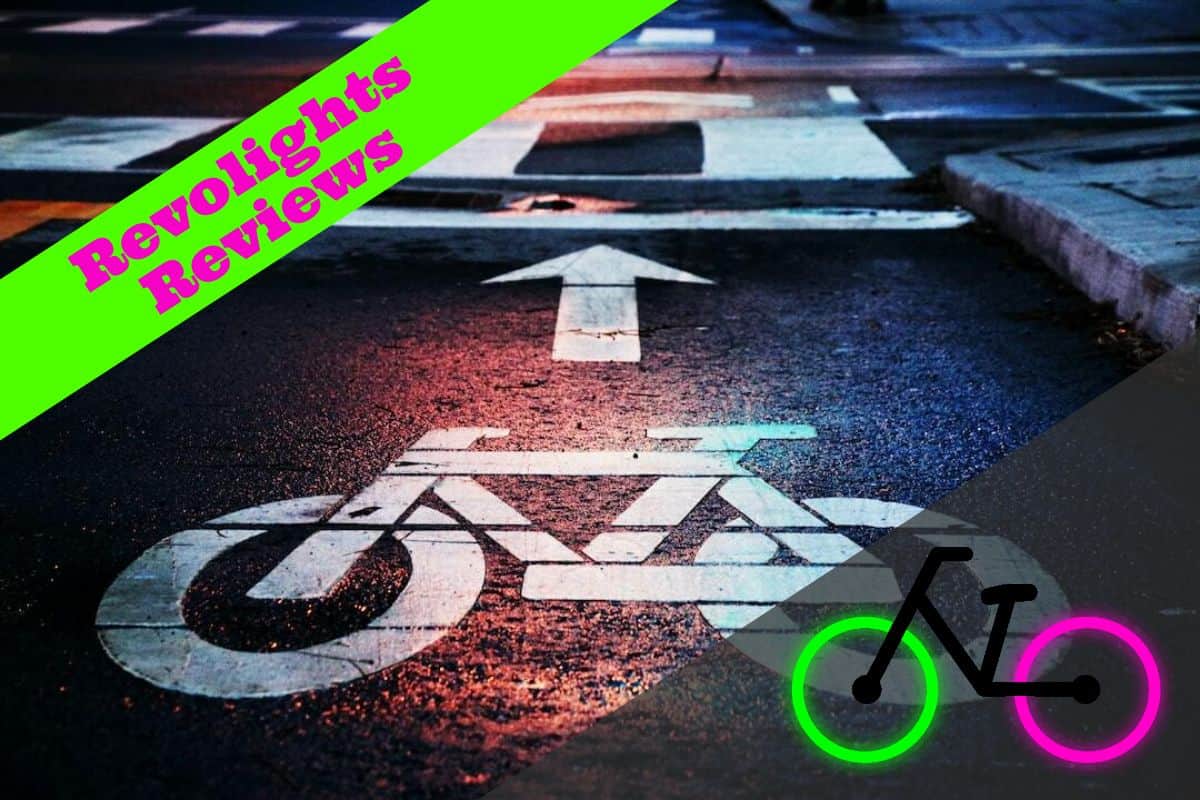When I think about creating safer, more bike-friendly cities, lighting isn’t always the first thing that comes to mind—but it should be. Good lighting does so much more than just brighten streets; it transforms the way we experience urban spaces, especially for cyclists. Whether it’s a well-lit bike lane or a thoughtfully illuminated intersection, the right lighting can mean the difference between feeling safe or vulnerable on two wheels.

It’s not just about safety, though. Lighting plays a huge role in how cities encourage cycling as a practical, everyday option. A well-designed system invites more people to hop on their bikes, whether they’re commuting, running errands, or just enjoying the ride. With more cyclists on the road, cities can move closer to their goals of sustainability and reduced traffic congestion. It’s amazing how something as simple as light can shape the future of urban mobility.
Understanding The Role Of Lighting In Bicycle Advocacy
Lighting plays a critical role in making cycling safer and more accessible. As someone who loves riding bikes and tinkering with lighting setups, I’ve seen firsthand how proper illumination can transform the cycling experience.
Importance Of Proper Lighting For Cyclist Safety
Well-designed lighting setups prevent accidents by ensuring cyclists are visible to drivers and pedestrians. Poor lighting increases the risk of collisions, especially at night or in low-visibility conditions. I always recommend installing bright, front LED lights and durable rear lights for both commuting and recreational rides. Lighting isn’t just about others seeing you; it’s also about being able to see the road, especially in areas with obstacles like potholes or debris.
Studies show that well-lit bike lanes reduce accidents by up to 40%. City planners embracing tailored lighting designs in cycling infrastructure can make a real difference. For example, motion-sensor lights along trails brighten as cyclists approach, offering both efficiency and safety.
Enhancing Visibility In Urban Environments
Urban areas packed with cars and pedestrians demand optimal visibility. I’ve often noticed how good lighting helps cyclists stand out amidst headlights and streetlights. Reflective gear complements lighting but can’t replace a powerful, focused beam on both bikes and at intersections.
Cities adopting smart lighting solutions, like adaptive or color-changing LED systems, enhance visibility for all. These innovations illuminate paths, highlight crossings, and create visual cues for safer interactions between cyclists and other road users. I’ve been particularly impressed with how lighting paired with bike sensors improves safety at busy intersections.
Lighting Standards And Guidelines In Urban Design
Lighting plays a significant role in designing urban spaces that prioritize cyclist safety and comfort. Adhering to well-defined standards ensures bike lanes and mixed urban environments remain safe and functional, especially after dark.
Key Features Of Bicycle-Friendly Lighting
Bicycle-friendly lighting enhances visibility for cyclists, pedestrians, and drivers. One critical feature is uniform illumination that eliminates dark spots along bike paths. Uneven lighting can create safety hazards, so consistent brightness is necessary for clear navigation.
Color temperature is another important aspect. Warmer tones below 3000K are commonly used in residential areas for comfort, while cooler tones of 4000K or higher are better for commercial zones. Brighter, cooler light ensures cyclists and other road users can recognize objects and movements from a distance.
Shielding also prevents glare, which can disorient both cyclists and drivers. Well-designed fixtures direct light downward to maximize efficiency and minimize light pollution. High-CRI (Color Rendering Index) LEDs are recommended to enhance visual clarity, making obstacles and signage easier to detect.
Compliance With Safety Regulations
Urban lighting for bicycles must meet safety regulations to provide reliable performance in all conditions. Many cities follow guidelines from organizations like the Illuminating Engineering Society (IES) and the International Commission on Illumination (CIE). These entities recommend standards for light levels, uniformity ratios, and glare control.
Minimum lux levels are critical for ensuring safety on bike lanes. For example, 10-20 lux is the typical recommendation for shared-use paths, providing adequate illumination without overwhelming the surrounding environment. Regulations also require luminaires to be weatherproof and durable, given their exposure to outdoor conditions.
I’ve seen cities implement motion-activated lights to meet energy-saving policies, where lights brighten as cyclists approach and dim afterward. Adopting smart solutions like these aligns with compliance while fostering innovation in urban design. Installing certified fixtures that meet standards ensures safer and more enjoyable experiences for cyclists in urban spaces.
Impact Of Lighting On Cyclist Behavior
Proper lighting is a game-changer for nighttime and low-visibility cycling, influencing how cyclists make decisions and interact with their surroundings. As someone who’s spent countless hours riding and working on bikes, I’ve seen firsthand how lighting transforms safety and confidence on the road.
Promoting Safe Nighttime Cycling
« Bicycle Lighting for Photography and Videography: Affordable Hacks for Creative Lighting Effects
How to Teach Kids About Bicycle Safety and Lighting: Fun Tips Every Parent Needs to Know »
Lighting helps cyclists feel safer and more visible after dark. Bright LED bike lights, especially when set to flash mode, grab the attention of drivers and pedestrians, keeping everyone aware of a cyclist’s presence. I always recommend using a minimum of 500 lumens for front lights to illuminate obstacles and uneven surfaces clearly. Rear lights with consistent brightness levels ensure visibility in heavy traffic or poorly lit areas. Studies show that well-lit cyclists are recognized by motorists from 50% farther away than those without lights, helping avoid close passes and dangerous situations.
When bike lanes are equipped with proper lighting, riders are more likely to choose them over unlit routes. For example, motion-activated or continuous lighting in bike lanes creates a sense of security, encouraging more nighttime cycling. This makes it easier for individuals to rely on bikes for commuting or leisure, even in darker seasons.
Reducing Accidents Through Improved Illumination
Lighting plays a critical role in avoiding accidents. Cyclists with front and rear lights are 27% less likely to experience collisions, according to recent transportation studies. Bright, thoughtfully positioned streetlights further enhance visibility, preventing accidents at intersections, where over 43% of urban bike-related crashes happen. I’ve seen cities integrate color-coded lighting systems at crossings to alert both cyclists and drivers, reducing confusion and potential conflicts.
Another aspect I admire is adaptive lighting systems, which adjust brightness based on environmental conditions. These systems reduce glare while maintaining adequate illumination for both riders and approaching vehicles. Drivers often struggle to measure a cyclist’s speed or distance in poorly lit conditions, but improved lighting ensures better judgment, reducing fatal errors.
Innovative Urban Lighting Solutions For Cyclists
Lighting plays a key role in ensuring cyclists feel safe and visible in urban settings. As someone passionate about biking and lighting, I see how thoughtful designs can transform cycling infrastructure into something truly welcoming.
Smart Lighting Technologies
Smart lighting is revolutionizing urban cycling environments. Systems like motion-sensor lights activate only when cyclists or pedestrians approach, saving energy and reducing light pollution. Adaptive LED streetlights dim late at night but brighten when movement is detected, providing just the right amount of light exactly when it’s needed.
Bike-dedicated smart lighting solutions are also gaining traction. For example, LED-guided paths use embedded lights to guide cyclists through lanes, especially in areas with complex intersections. These systems, often combined with bike-sensor technologies, adjust brightness or color to highlight crossing zones for safety. Copenhagen’s green wave lighting, which syncs with cyclists’ speed to provide continuous green lights, is another impressive example of how smart urban lighting can enhance the biking experience.
Solar-Powered And Sustainable Lighting Options
Solar-powered lighting offers an environmentally friendly way to illuminate bike lanes and trails. Many cities now install solar streetlights with battery storage, allowing them to function consistently even during cloudy days. I’ve seen solar-charged beacon lights integrated into bike paths, creating illuminated trails without relying on traditional energy grids.
Sustainable lighting designs also focus on minimizing maintenance while maximizing lifespan. Fixtures made with LED bulbs not only consume less energy but last exponentially longer than traditional lights. I particularly admire hybrid systems that combine solar with wind power for even more reliability. It’s exciting to see these technologies align so well with biking’s focus on sustainability and green living.
Challenges And Opportunities In Implementing Lighting Systems
Addressing lighting challenges in urban cycling design creates opportunities for safer, more efficient streets. As both a cycling enthusiast and lighting advocate, I see these obstacles as chances to innovate and enhance the biking experience.
Budgetary And Maintenance Considerations
Allocating funds for high-quality lighting systems often presents a challenge. Many cities hesitate to invest in durable, energy-efficient fixtures due to high initial costs. However, solutions like LED lamps, which consume 75% less energy and last up to 25 times longer than incandescent bulbs, make these systems cost-effective over time. For instance, solar-powered streetlights can alleviate utility costs while providing reliable illumination for bike lanes.
Maintenance poses another issue, with upkeep of lighting infrastructure requiring consistent funding and labor. Incorporating motion-sensor lights minimizes wear and extends lifespans by reducing operating hours. This approach lessens maintenance frequency, saving resources while keeping bike paths illuminated where most needed. From my experience crafting DIY lighting setups, regular maintenance is vital but can be streamlined when using modern, low-maintenance components.
Integrating Lighting Into Comprehensive Urban Planning
Effective urban planning must align lighting with other components of city infrastructure. Cyclist-centric street designs, such as Copenhagen’s bike-friendly paths, integrate lighting with traffic systems to maintain flow and visibility. Lighting systems should adapt to urban layouts by positioning lights strategically at intersections, bends, and high-traffic zones to ensure constant illumination.
Collaboration among transportation planners, engineers, and lighting designers is crucial for cohesive solutions. Bicycle advocacy groups can also offer valuable insights, as cyclists understand key problem areas. Technologies like smart LED networks, which adjust brightness based on activity levels, further enhance planning efforts. I’ve found that integrating innovative, flexible lighting designs into urban layouts transforms how cyclists and drivers share the road, fostering safer interactions.
Conclusion
Lighting plays such a pivotal role in shaping bike-friendly cities and making urban spaces safer for everyone. It’s not just about visibility; it’s about creating an environment where cyclists feel confident and valued. When we invest in smart, well-designed lighting systems, we’re investing in a future where cycling becomes a practical, enjoyable, and sustainable mode of transportation.
By prioritizing thoughtful lighting solutions, we can reduce accidents, encourage more people to ride, and transform how cities function. It’s exciting to think about the possibilities when urban design and bicycle advocacy come together to create brighter, safer streets for all.




